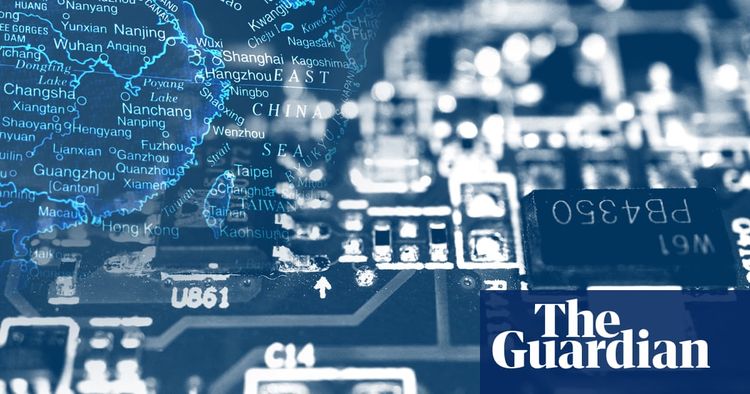China's War For Semiconductors & Future Conflict

The US and China conflict signs can be seen everywhere, even in balloons and TikTok videos. Semiconductors, also called silicon wafers, show the conflict the most.
Microchips, also known as semiconductors, are tiny tech pieces. They power things from microwaves to military weapons. The industry is worth over $580bn (£466bn). But their importance goes beyond that number. They power trillions worth of goods and processes. Without them, the global economy would stop.
This worries many because over 90% of the world’s semiconductors are made in Taiwan. US officials think that Taiwan could be the next site of global conflict.
US officials think that China may try to take over Taiwan in the next ten years. If this happens, China's supply of semiconductors would have a big problem. This would be a problem for the whole world, too.
China wants to improve its semiconductor production for economic and military reasons. The United States is using trade to weaken these attempts.
China's president Xi Jinping said in 2019 that bringing Taiwan under the Chinese Communist party (CCP) is necessary. More people in Taiwan are saying they don't want to be associated with the CCP, and China is pushing to resolve the "Taiwan issue". Xi thinks bringing Taiwan back is important for his legacy and may use force if necessary.
A war between Taiwan and China could cause great harm to both sides and the world economy. Experts say it could happen soon, maybe within five or ten years. China has to get ready for a war by making its economy and military stronger and finding friends. We will talk about what China is doing to prepare in this series.
In 2011, China had 1,300 chip companies. In 2020, there were 22,800 companies. But most companies make chips that are bigger and not as high-tech. Top chips are 5 nanometers or smaller. China's chips are mostly 24 nanometers or bigger.
China's major chip maker, SMIC, created a 7-nanometer chip in 2020 which marked significant technological progress. However, industry experts don't believe that SMIC can produce these chips on a large scale. China aimed to be 70% self-sufficient in semiconductors by 2025, but it appears to be a distant target.
The US does not want this to happen. They installed strict rules to prevent it. The rules ban China from using US-made chips worldwide. The Netherlands also joined a group with the US and Japan to limit exporting chip technology.
It looks like the plan is successful. China bought 23% fewer chips in the first 3 months of 2023 than in the same period the year before.
Beijing may offer a 1trn yuan support package for the semiconductor industry. The package may include tax breaks or subsidies.
John Lee, a tech analyst, says that China's higher authorities are now realizing the importance of supporting firms in critical supply chains due to the new US export controls.
China might punish American competitors. On Sunday, China's cyber security watchdog announced that Micron - one of the world's top chip makers and an American company - didn't pass a security check.
The watchdog gives advice to stop buying Micron products to critical information infrastructure operators in China.
China considers many industries, such as transportation and healthcare, as critical information infrastructure. Micron's spokesperson said they plan to keep talking with Chinese officials but didn't say if they'll appeal the decision.
China's leaders are changing their technology strategy. They want to have more control over science and technology policy. The Communist party will now have more direct control. This is because there was a shakeup.
Experts believe that just having money won't boost China's industry. Chinese semiconductor makers are way behind rivals like Taiwan Semiconductor Manufacturing Company and ASML from the Netherlands. This gap has been there for decades.
China's semiconductor industry spends less on research and development compared to the US. The Chinese industry spends 7.6%, while the US industry spends 18%, according to the Semiconductor Industry Association.
Some entrepreneurs create fake companies to get government money. The government stopped this last year by cancelling the licences of 6,000 chip companies. The number was up by 70% from 2021.
Lee says that technical issues in China need both equipment and chemicals to be efficiently and reliably used. It will take years of experience for Chinese companies to scale up production.




































![SILVERBACK SERVER VS ORANGUTAN OOGA BOOGA 🍔🥊 [I GUESS HE COULDN'T HAVE IT HIS WAY]](https://bfn.today/@btc/live/cover_images/d576WL2AwSIp/yq6FOFGqx815_640x360.jpg.webp)








